Enhancing Green Finance for Inclusive Green Growth: A Systematic Approach
Abstract
:1. Introduction
2. Methodology
3. Result and Interpretations
3.1. Publication Trends
3.2. Frequency of Documents Used in the Study
3.3. Citation Analysis
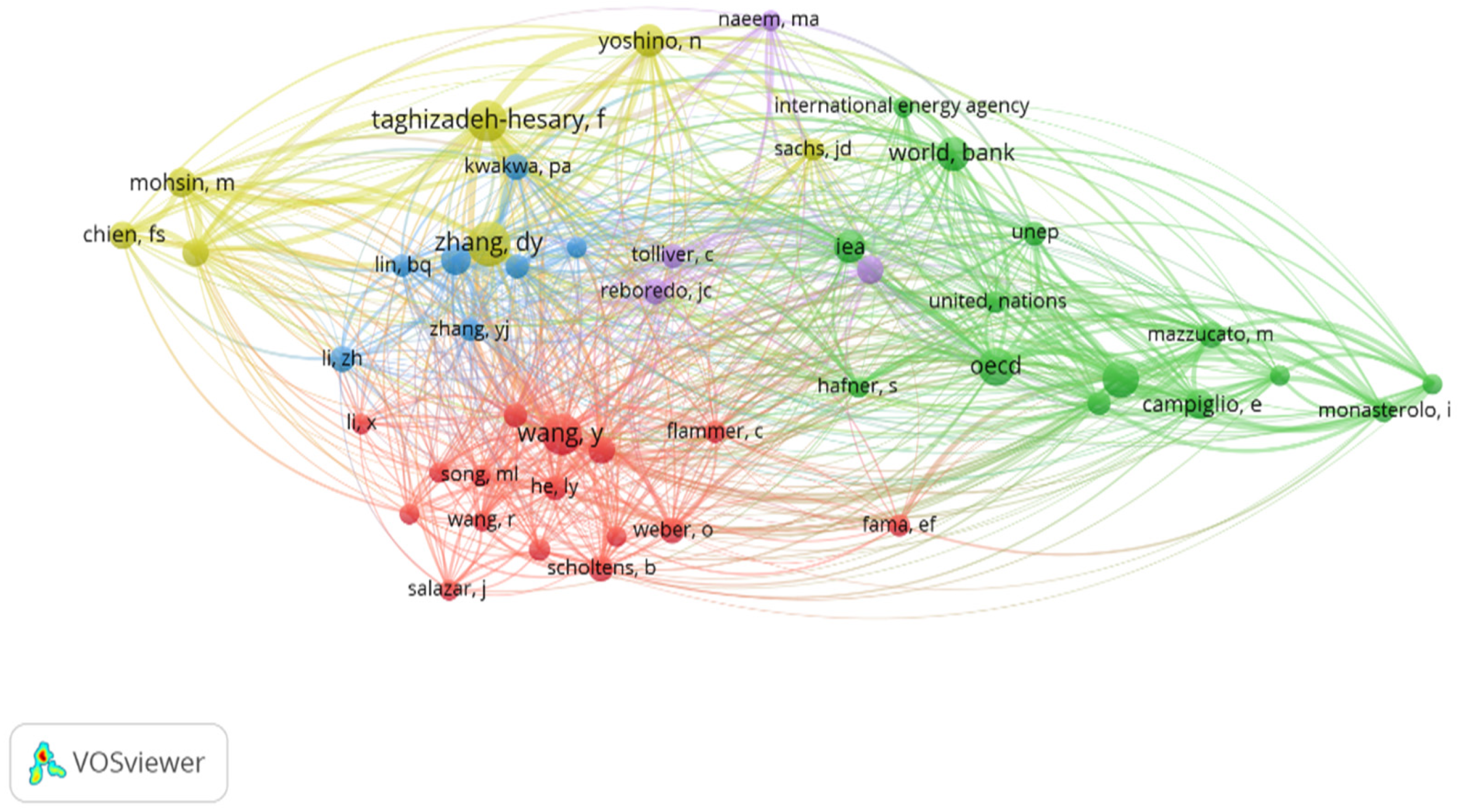
3.4. Most Research Areas Contribute to Green Finance Publication
3.5. Country’s Contribution to Green Finance
3.6. Methodological Characteristics of Reviewed Studies in Green Finance
4. Discussion
5. Future Agenda
6. Conclusions
Author Contributions
Funding
Institutional Review Board Statement
Informed Consent Statement
Conflicts of Interest
References
- Dmuchowski, P.; Dmuchowski, W.; Baczewska-Dąbrowska, A.H.; Gworek, B. Green economy—Growth and maintenance of the conditions of green growth at the level of polish local authorities. J. Clean. Prod. 2021, 301, 126975. [Google Scholar] [CrossRef]
- United Nations Economic Commission for Africa. Inclusive Green Growth in Ethiopia: Selected Case Studies; UN.ECA.: Addis Ababa, Ethiopia, 2015. [Google Scholar]
- Naz, F.; Oláh, J.; Vasile, D.; Magda, R. Green purchase behavior of university students in Hungary: An empirical study. Sustainability 2020, 12, 10077. [Google Scholar] [CrossRef]
- Cai, R.; Guo, J. Finance for the environment: A scientometrics analysis of green finance. Mathematics 2021, 9, 1537. [Google Scholar] [CrossRef]
- UNEP. State of Finance for Nature. 2021. Available online: https://www.unep.org/resources/state-finance-nature (accessed on 24 February 2022).
- Ahmad, M.; Ahmed, Z.; Bai, Y.; Qiao, G.; Popp, J.; Oláh, J. Financial inclusion, technological innovations, and environmental quality: Analyzing the role of green openness. Front. Environ. Sci. 2022, 10, 851263. [Google Scholar] [CrossRef]
- Volz, U. Fostering green finance for sustainable development in Asia. In Routledge Handbook of Banking and Finance in Asia; Routledge: London, UK, 2018; pp. 488–504. [Google Scholar]
- Campiglio, E. Beyond carbon pricing: The role of banking and monetary policy in financing the transition to a low-carbon economy. Ecol. Econ. 2016, 121, 220–230. [Google Scholar] [CrossRef] [Green Version]
- Debrah, C.; Chan, A.P.C.; Darko, A. Green finance gap in green buildings: A scoping review and future research needs. Build. Environ. 2021, 207, 108443. [Google Scholar] [CrossRef]
- Chang, L.; Wang, J.; Xiang, Z.; Liu, H. Impact of green financing on carbon drifts to mitigate climate change: Mediating role of energy efficiency. Front. Energy Res. 2021, 9, 11. [Google Scholar] [CrossRef]
- Zenghelis, D. A Strategy for Restoring Confidence and Economic Growth Through Green Investment and Innovation; Policy Brief. 2012. Available online: http://pascalobservatory.org/sites/default/files/pb-zenghelis-economic-growth-green-investment-innovation_0.pdf (accessed on 21 January 2022).
- Sutherland, B.R. Financing a green new deal. Joule 2020, 4, 1153–1155. [Google Scholar] [CrossRef]
- McCrone, A.; Moslener, U.; D’Estais, F.; Usher, E.; Grüning, C. Global Trends in Renewable Energy Investment 2017. Bloomberg New Energy Finance. 2017. Available online: http://www.bbhub.io/bnef/sites/4/2015/03/UNEP-Frankfurt-School-BNEF-report-20151.pdf (accessed on 16 April 2022).
- Polzin, F.; Migendt, M.; Täube, F.A.; Von Flotow, P. Public policy influence on renewable energy investments—A panel data study across OECD countries. Energy Policy 2015, 80, 98–111. [Google Scholar] [CrossRef] [Green Version]
- Zhang, D.; Zhang, Z.; Managi, S. A bibliometric analysis on green finance: Current status, development, and future directions. Financ. Res. Lett. 2019, 29, 425–430. [Google Scholar] [CrossRef]
- Nawaz, M.A.; Seshadri, U.; Kumar, P.; Aqdas, R.; Patwary, A.K.; Riaz, M. Nexus between green finance and climate change mitigation in N-11 and BRICS countries: Empirical estimation through difference in differences (DID) approach. Environ. Sci. Pollut. Res. 2021, 28, 6504–6519. [Google Scholar] [CrossRef] [PubMed]
- Afridi, F.E.A.; Jan, S.; Ayaz, B.; Irfan, M. Green finance incentives: An empirical study of the Pakistan banking sector. Rev. Amaz. Investig. 2021, 10, 169–176. [Google Scholar] [CrossRef]
- Alieva, I.A.; Altunina, V.V. Current trends in the development of a green finance system: Methodology and practice. Balt. Reg. 2021, 13, 64–89. [Google Scholar] [CrossRef]
- Andreeva, O.V.; Vovchenko, N.G.; Ivanova, O.B.; Kostoglodova, E.D. Green finance: Trends and financial regulation prospects. In Contemporary Issues in Business and Financial Management in Eastern Europe; Emerald Publishing: Bingley, UK, 2018; pp. 9–17. [Google Scholar] [CrossRef]
- Lindenberg, N. Definition of Green Finance; German Development Institute: Bonn, Germany, 2014; p. 3. [Google Scholar]
- Mohsin, M.; Taghizadeh-Hesary, F.; Panthamit, N.; Anwar, S.; Abbas, Q.; Vo, X.V. Developing low carbon finance index: Evidence from developed and developing economies. Financ. Res. Lett. 2020, 43, 101520. [Google Scholar] [CrossRef]
- Jin, J.; Han, L. Assessment of Chinese green funds: Performance and industry allocation. J. Clean. Prod. 2018, 171, 1084–1093. [Google Scholar] [CrossRef]
- Wang, H.; Qi, S.; Zhou, C.; Zhou, J.; Huang, X. Green credit policy, government behavior and green innovation quality of enterprises. J. Clean. Prod. 2021, 331, 129834. [Google Scholar] [CrossRef]
- Dou, X.; Qi, S. The choice of green bond financing instruments. Cogent Bus. Manag. 2019, 6, 1652227. [Google Scholar] [CrossRef]
- Fang, Z.; Xie, J.; Peng, R.; Wang, S. Climate finance: Mapping air pollution and finance market in time series. Econometrics 2021, 9, 43. [Google Scholar] [CrossRef]
- Hafner, S.; Jones, A.; Anger-Kraavi, A.; Pohl, J. Closing the green finance gap—A systems perspective. Environ. Innov. Soc. Transit. 2020, 34, 26–60. [Google Scholar] [CrossRef]
- Moher, D.; Liberati, A.; Tetzlaff, J.; Altman, D.G.; PRISMA Group. Preferred reporting items for systematic reviews and Meta-analyses: The PRISMA statement. Ann. Intern. Med. 2009, 151, 264–269. [Google Scholar] [CrossRef] [Green Version]
- Iqbal, S.; Taghizadeh-Hesary, F.; Mohsin, M.; Iqbal, W. Assessing the role of the green finance index in environmental pollution reduction. Stud. Appl. Econ. 2021, 39. [Google Scholar] [CrossRef]
- Brancaccio, E.; Gallegati, M.; Giammetti, R. Neoclassical influences in agent-based literature: A systematic review. J. Econ. Surv. 2021, 36, 350–385. [Google Scholar] [CrossRef]
- Ruiz, J.G.; Arboleda, C.; Botero, S. A proposal for green financing as a mechanism to increase private participation in sustainable water infrastructure systems: The Colombian case. Procedia Eng. 2016, 145, 180–187. [Google Scholar] [CrossRef] [Green Version]
- Taghizadeh-Hesary, F.; Yoshino, N. The way to induce private participation in green finance and investment. Financ. Res. Lett. 2019, 31, 98–103. [Google Scholar] [CrossRef]
- Taghizadeh-Hesary, F.; Yoshino, N. Sustainable solutions for green financing and investment in renewable energy projects. Energies 2020, 13, 788. [Google Scholar] [CrossRef] [Green Version]
- He, L.; Liu, R.; Zhong, Z.; Wang, D.; Xia, Y. Can green financial development promote renewable energy investment efficiency? A consideration of bank credit. Renew. Energy 2019, 143, 974–984. [Google Scholar] [CrossRef]
- Cui, Y.; Geobey, S.; Weber, O.; Lin, H. The impact of green lending on credit risk in China. Sustainability 2018, 10, 2008. [Google Scholar] [CrossRef] [Green Version]
- Falcone, P.M.; Morone, P.; Sica, E. Greening of the financial system and fuelling a sustainability transition. Technol. Forecast. Soc. Chang. 2018, 127, 23–37. [Google Scholar] [CrossRef]
- Yoshino, N.; Taghizadeh–Hesary, F.; Nakahigashi, M. Modelling the social funding and spill-over tax for addressing the green energy financing gap. Econ. Model. 2018, 77, 34–41. [Google Scholar] [CrossRef]
- Clark, R.; Reed, J.; Sunderland, T. Bridging funding gaps for climate and sustainable development: Pitfalls, progress and potential of private finance. Land Use Policy 2018, 71, 335–346. [Google Scholar] [CrossRef]
- Ng, A.W. From sustainability accounting to a green financing system: Institutional legitimacy and market heterogeneity in a global financial centre. J. Clean. Prod. 2018, 195, 585–592. [Google Scholar] [CrossRef]
- Desalegn, G.; Fekete-Farkas, M.; Tangl, A. The effect of monetary policy and private investment on green finance: Evidence from Hungary. J. Risk Financ. Manag. 2022, 15, 117. [Google Scholar] [CrossRef]
- Dörry, S.; Schulz, C. Green financing, interrupted. Potential directions for sustainable finance in Luxembourg. Local Environ. 2017, 23, 717–733. [Google Scholar] [CrossRef]
- Batrancea, I.; Batrancea, L.; Rathnaswamy, M.M.; Tulai, H.; Fatacean, G.; Rus, M.-I. Greening the financial system in USA, Canada and Brazil: A panel data analysis. Mathematics 2020, 8, 2217. [Google Scholar] [CrossRef]
- Falcone, P.M.; Sica, E. Assessing the opportunities and challenges of green finance in Italy: An analysis of the biomass production sector. Sustainability 2019, 11, 517. [Google Scholar] [CrossRef] [Green Version]
- Frijns, B. Financial markets and uncertainty. J. Empir. Financ. 2015, 32, 1–2. [Google Scholar] [CrossRef]
- Abdou, R.; Cassells, D.; Berrill, J.; Hanly, J. An empirical investigation of the relationship between business performance and suicide in the US. Soc. Sci. Med. 2020, 264, 113256. [Google Scholar] [CrossRef]
- Naqvi, B.; Mirza, N.; Rizvi, S.K.A.; Porada-Rochoń, M.; Itani, R. Is there a green fund premium? Evidence from twenty seven emerging markets. Glob. Financ. J. 2021, 50, 100656. [Google Scholar] [CrossRef]
- Cheberyako, O.V.; Varnalii, Z.S.; Borysenko, O.A.; Miedviedkova, N.S. “Green” finance as a modern tool for social and environmental security. IOP Conf. Ser. Earth Environ. Sci. 2021, 915, 012017. [Google Scholar] [CrossRef]
- Giramkar, S. Green banking in india: A study for sustainable devlopment. In Proceedings of the 10th Economics & Finance Conference; No. PG-138-152; International Institute of Social and Economic Sciences: London, UK, 2018; pp. 138–152. [Google Scholar] [CrossRef] [Green Version]
- Lv, C.; Shao, C.; Lee, C.-C. Green technology innovation and financial development: Do environmental regulation and innovation output matter? Energy Econ. 2021, 98, 105237. [Google Scholar] [CrossRef]
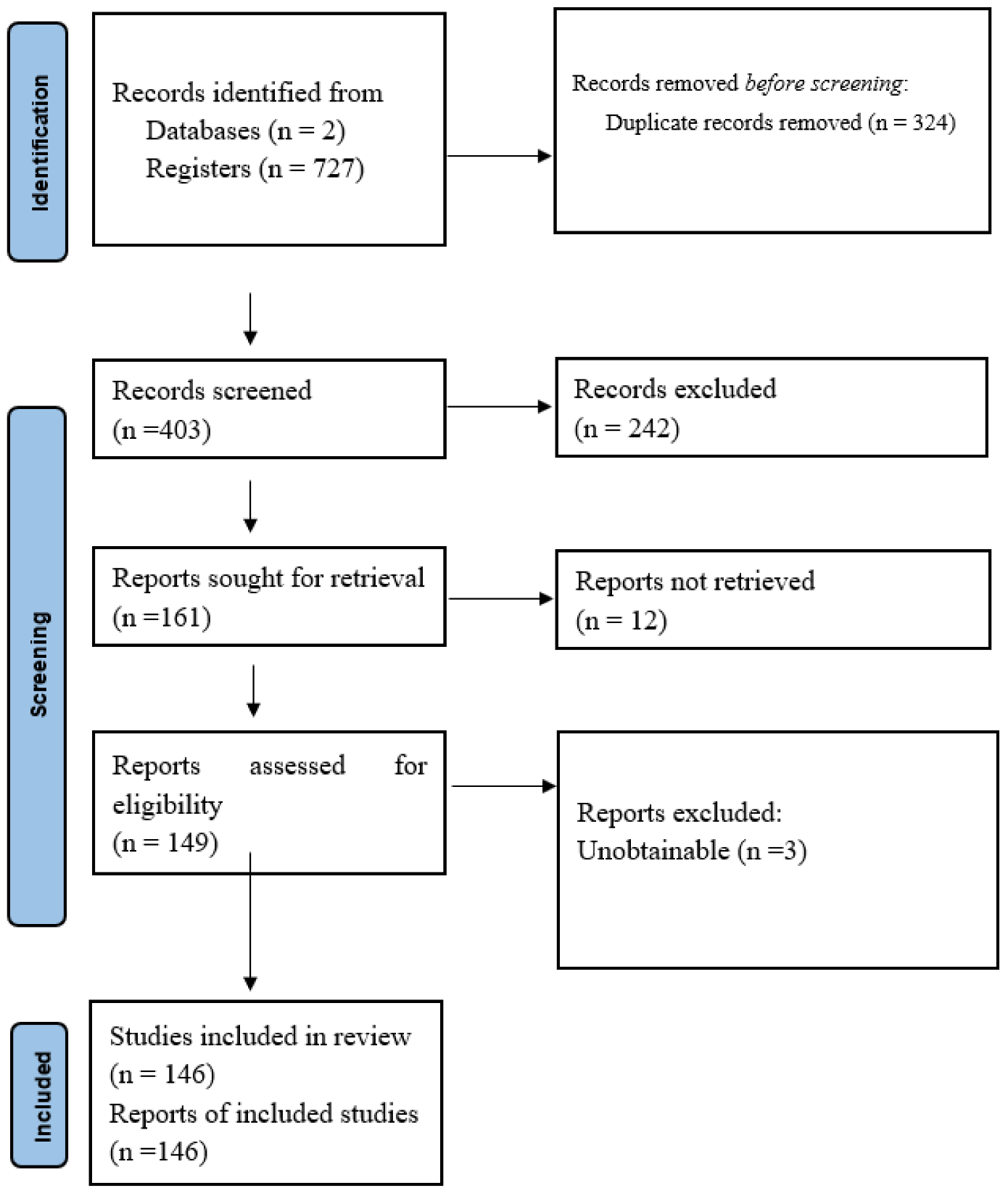
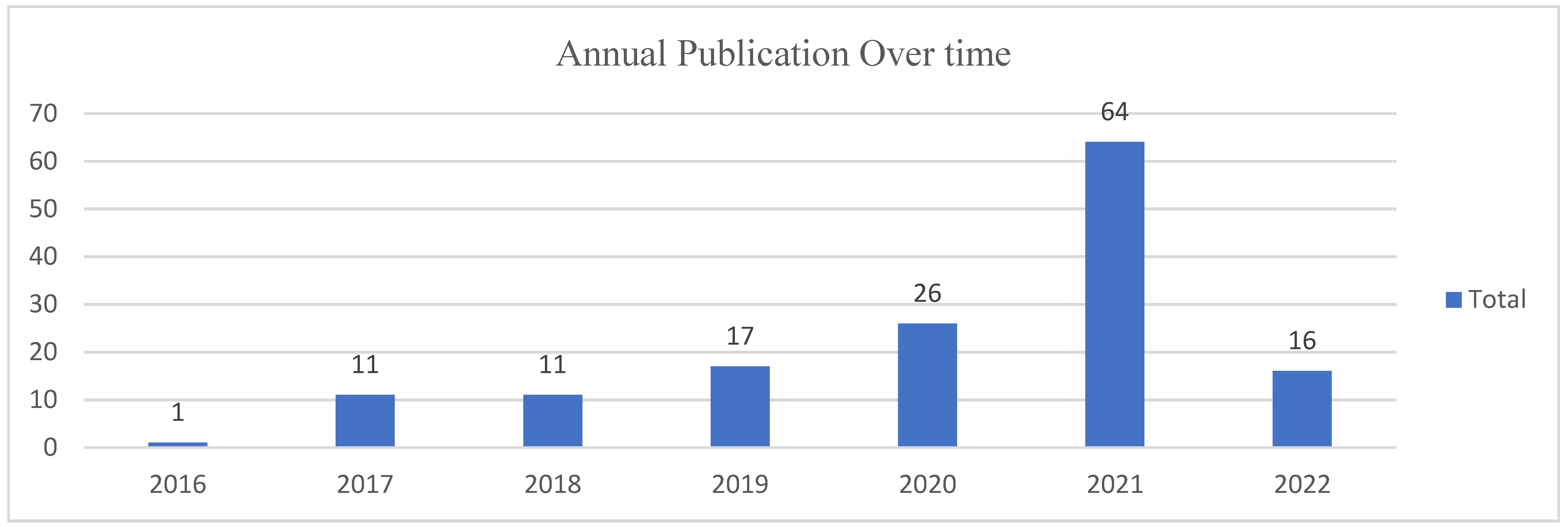
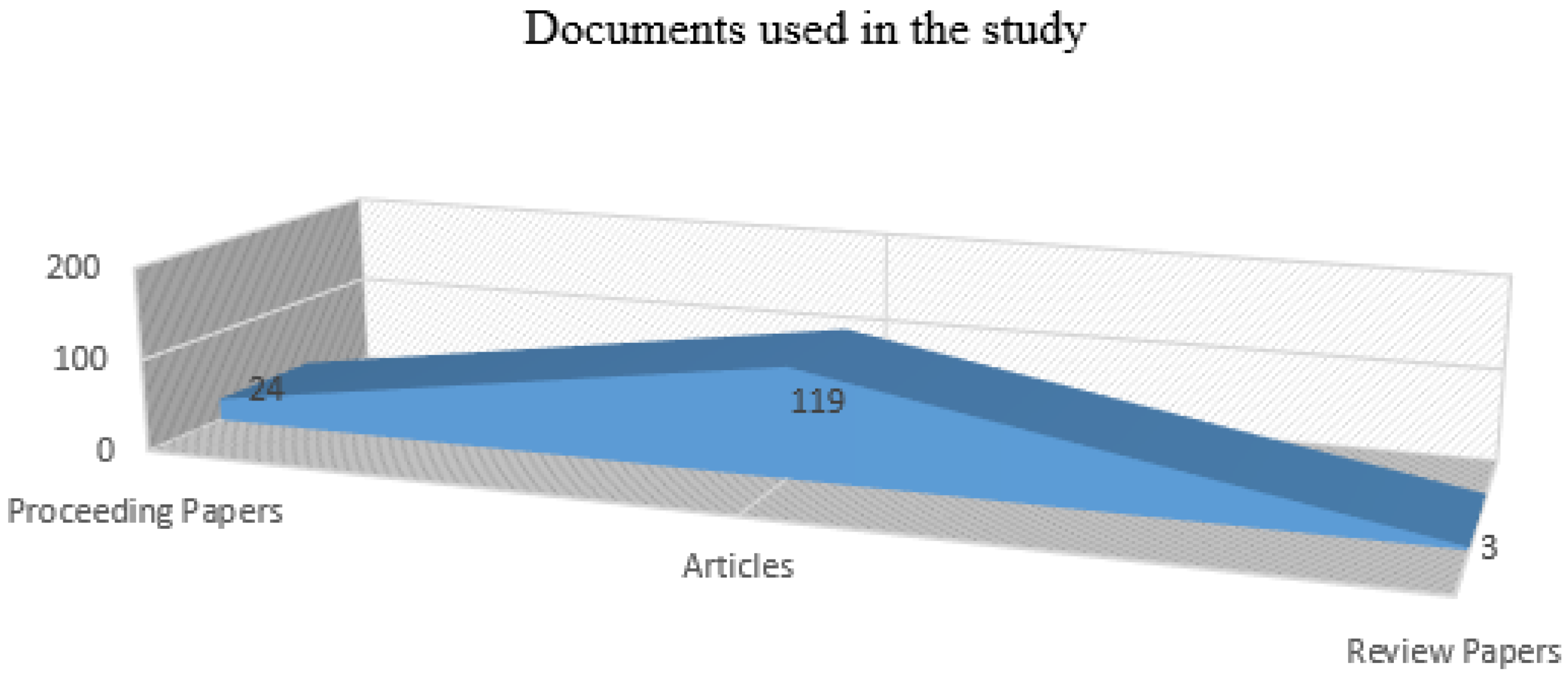
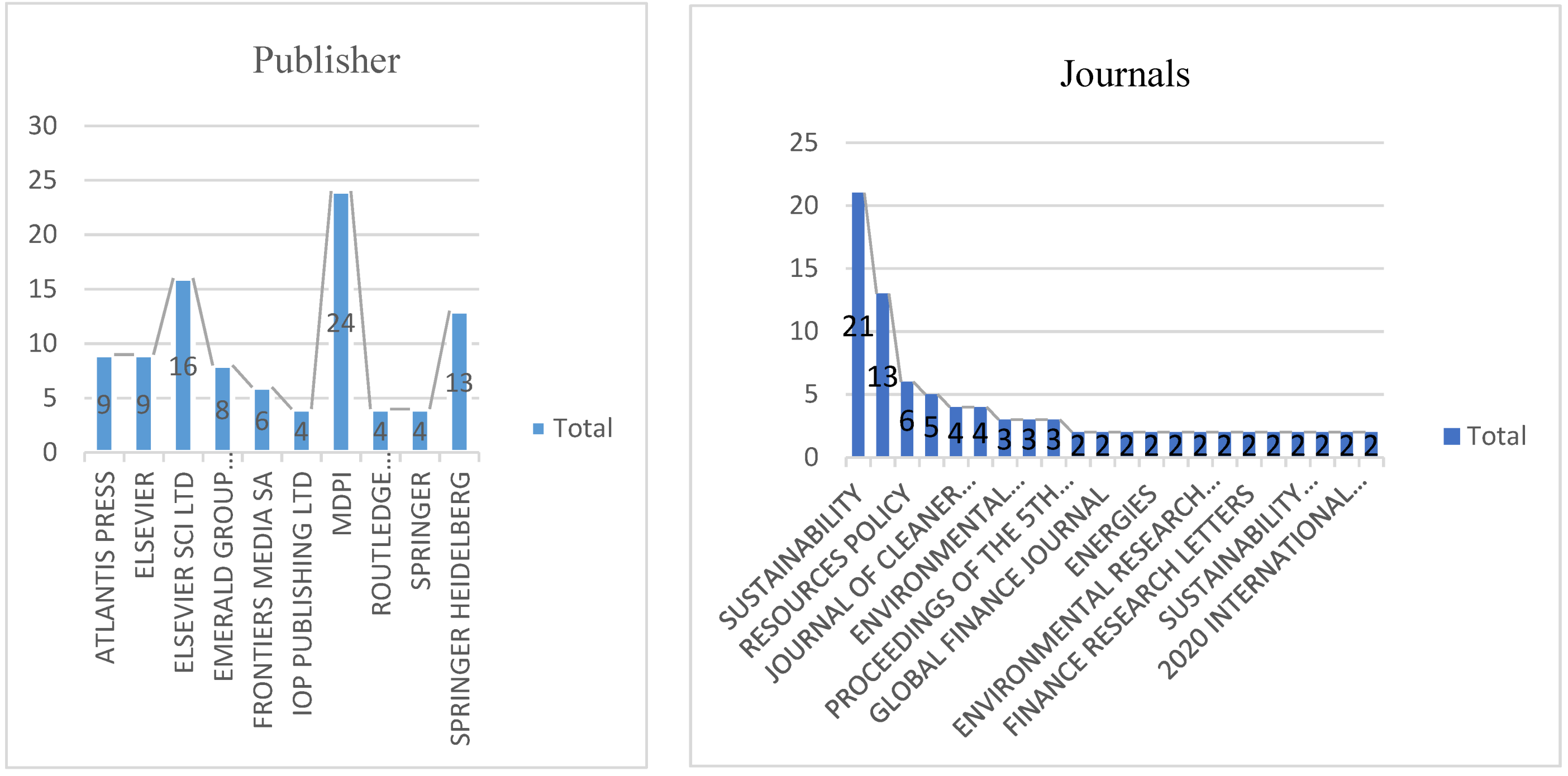
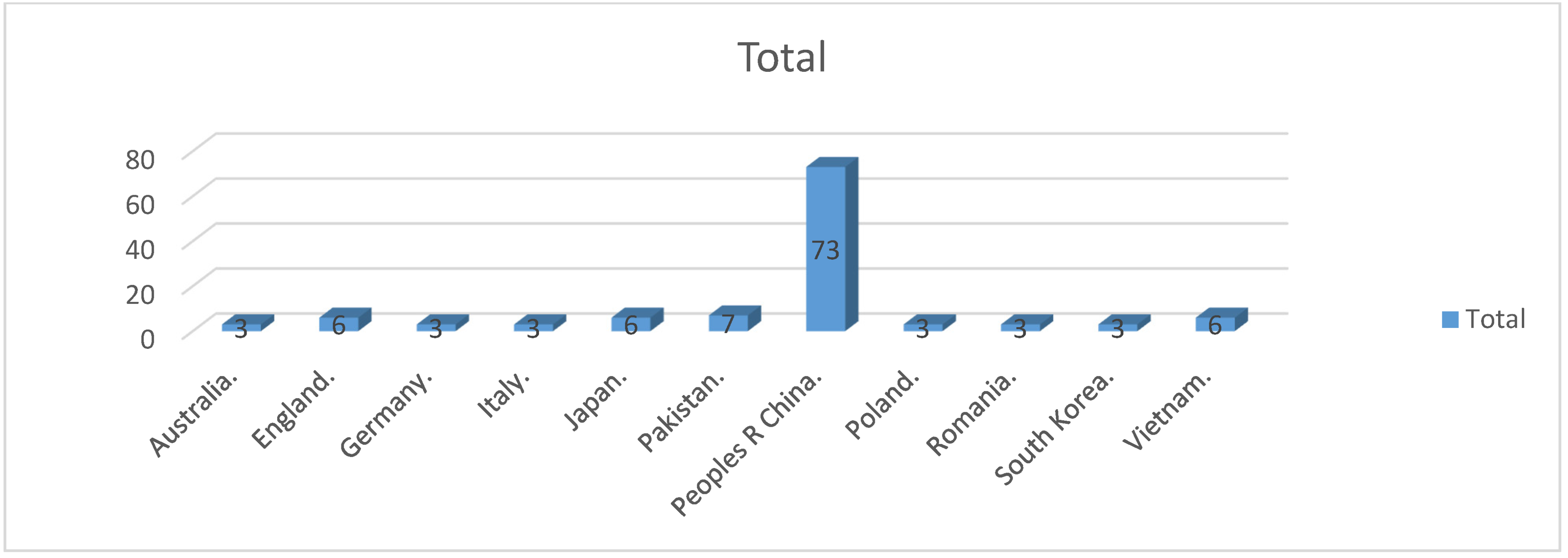

| Carbon finance | Defined as financial policies that increase investments and financing for the development of low-carbon projects, as well as other financial intermediary activities. | [21] |
| Green fund | Debt and equity financing that provides clients with platforms for long-term funding of environmentally friendly businesses and organizations. | [22] |
| Green credit | Project loans (mainly mortgage) and industrial loans can be facilitated through the green deposit. | [23] |
| Green bond | Proceeds solely used to finance or refinance projects with obvious environmental benefits. | [24] |
| Climate finance | In general, financing promotes the climate resilience of infrastructure, as well as social and economic assets. | [25] |
| Article Title | Authors | Cited Times |
|---|---|---|
| The way to induce private participation in green finance and investment | [31] | 129 |
| A bibliometric analysis on green finance: Current status, development, and future directions | [15] | 89 |
| Sustainable Solutions for Green Financing and Investment in Renewable Energy Projects | [32] | 66 |
| Can green financial development promote renewable energy investment efficiency? A consideration of bank credit | [33] | 60 |
| Nexus between green finance and climate change mitigation in N-11 and BRICS countries: empirical estimation through difference in differences (DID) approach | [16] | 53 |
| The Impact of Green Lending on Credit Risk in China | [34] | 51 |
| Greening of the financial system and fueling a sustainability transition A discursive approach to assess landscape pressures on the Italian financial system | [35] | 50 |
| Modeling the social funding and spill-over tax for addressing the green energy financing gap | [36] | 49 |
| Bridging funding gaps for climate and sustainable development: Pitfalls, progress, and potential of private finance | [37] | 48 |
| From sustainability accounting to a green financing system: Institutional legitimacy and market heterogeneity in a global financial Centre. | [38] | 47 |
| Research Areas | Publication Times |
|---|---|
| Business and Economics | 35 |
| Environmental Sciences and Ecology | 30 |
| Science and Technology—Other Topics; Environmental Sciences and Ecology | 22 |
| Energy and Fuels | 5 |
| Business and Economics; Energy and Fuels; Environmental Sciences and Ecology | 5 |
| Science and Technology—Other Topics; Engineering; Environmental Sciences and Ecology | 4 |
| Social Sciences—Other Topics | 3 |
| Mathematics; Science and Technology—Other Topics | 3 |
| Business and Economics; Science and Technology—Other Topics | 3 |
| Environmental Sciences and Ecology; Meteorology and Atmospheric Sciences | 3 |
Publisher’s Note: MDPI stays neutral with regard to jurisdictional claims in published maps and institutional affiliations. |
© 2022 by the authors. Licensee MDPI, Basel, Switzerland. This article is an open access article distributed under the terms and conditions of the Creative Commons Attribution (CC BY) license (https://creativecommons.org/licenses/by/4.0/).
Share and Cite
Desalegn, G.; Tangl, A. Enhancing Green Finance for Inclusive Green Growth: A Systematic Approach. Sustainability 2022, 14, 7416. https://doi.org/10.3390/su14127416
Desalegn G, Tangl A. Enhancing Green Finance for Inclusive Green Growth: A Systematic Approach. Sustainability. 2022; 14(12):7416. https://doi.org/10.3390/su14127416
Chicago/Turabian StyleDesalegn, Goshu, and Anita Tangl. 2022. "Enhancing Green Finance for Inclusive Green Growth: A Systematic Approach" Sustainability 14, no. 12: 7416. https://doi.org/10.3390/su14127416
APA StyleDesalegn, G., & Tangl, A. (2022). Enhancing Green Finance for Inclusive Green Growth: A Systematic Approach. Sustainability, 14(12), 7416. https://doi.org/10.3390/su14127416







